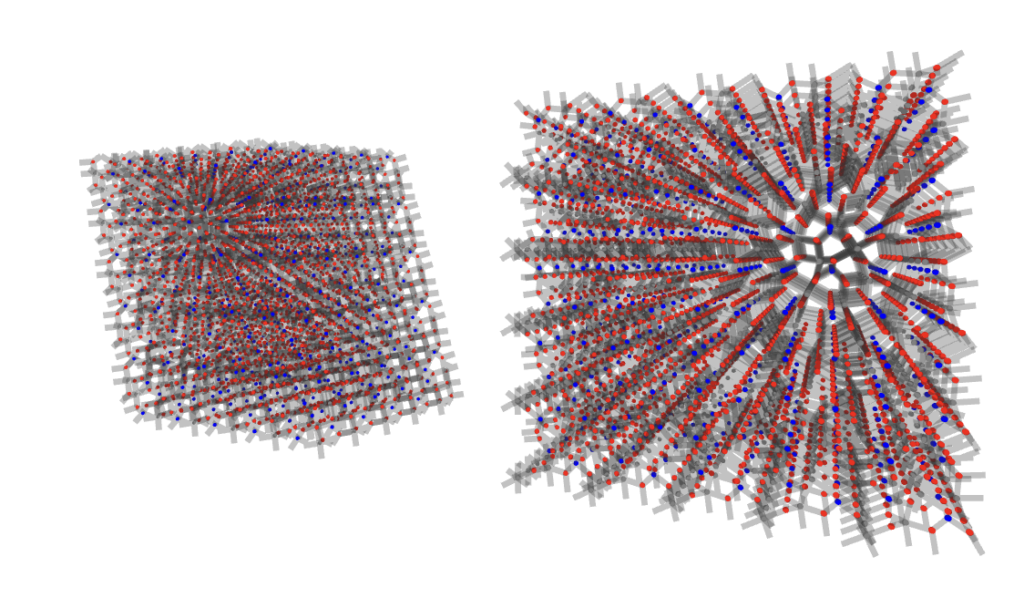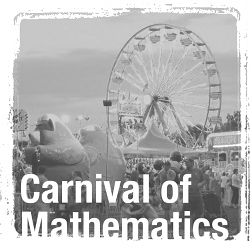This month’s Carnival is hosted right here at The Aperiodical, and rounds up interesting internet maths content from the month of October 2022.
The Carnival of Mathematics is a monthly blogging round up hosted by a different blog each month, and collects blog posts, videos, social media posts and other internet content from the month in question. This is the 210th Carnival, and I’ll start as is customary with some interesting facts about the number 210, sourced from Wikipedia and the always-excellent Number Gossip:
- 210 is the product of the first 4 primes, meaning it’s a Primorial (like a Factorial, but with primes)
- It is a triangular number, a pentagonal number and the first 71-gonal number
- It’s also an untouchable number, which means it’s not the sum of the proper divisors of any other number (and will therefore never turn up in an Aliquot sequence).
On with the Carnival!
The biggest new source of maths content on the internet this month has to be the 24 Hour Maths Game Show, which took place on 28th-29th October and was an extravaganza of all things maths and games (and in the case of some of us on the organising team, caffeine). We ran from 7pm on Friday night through to 7pm on Saturday, and included a huge selection of mathematicians talking about games, playing mathematical versions of existing games (and game shows!) and generally enjoying the subjects of maths and games.
Highlights included: Simon Singh’s House of Games; me playing a game of Numberwang at midnight; Aperiodical editor Peter Rowlett joined by fellow Recreational Maths lecturer Alex Corner talking about Games You’re Not Really Playing, and other Aperiodical editor Christian Perfect challenging me, Alex and Colin Wright to a mathematical interesting fact-based version of Blockbusters. The whole show is available to watch back, and has so far raised nearly £5000 for charity – if you enjoy it, think about chipping in if you can.

Also in the carnival this month: Explanaria has made an interactive introduction to group theory via crystal groups, starting from a simple-to-state question and showing you why you should care about the abstract definitions underneath.
We also received news of a claimed proof of the twin prime conjecture, along with a lively discussion about it on a Stack Exchange thread.

There’s a lot of chat on Twitter about… well, Twitter – and many are discussing whether to move to alternative social networks. Here’s a blog post from Ben Leis at Math Off the Grid about his experiences with Mastodon, one of the main alternatives being mooted (and tooted). If you’re thinking about moving, we recommend you start at mathstodon.xyz, a maths instance of Mastodon through which you can access the rest of it (but it’s full of friendly maths people, including us!)
It was also Hallowe’en this month, and there’s a blog post from Dave Richeson at Division By Zero with instructions on how to make a spooky flexagon (flexaghoul).
And in sad maths blogging news, Mathbabe (Cathy O’Neill) posted to annouce that she’s stopping blogging and her blog is now an archive – a shame, but there’s plenty of good past posts to browse.
